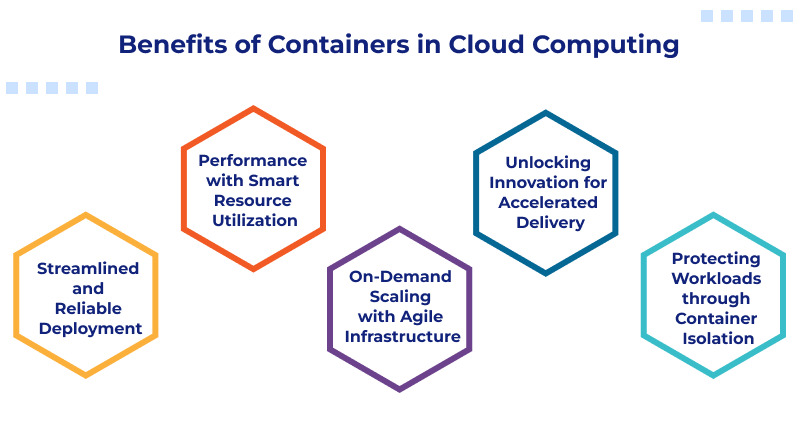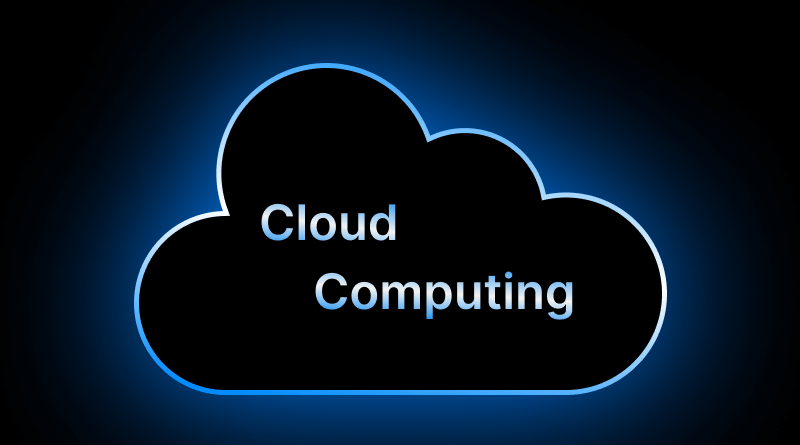The emergence of cloud computing has had a significant impact on global businesses. It helps organizations with application launch, maintenance, and rolling out updates. In the domain of cloud computing, containers have a wide scope of applications. As a beginner-level explorer, you must gain a clear understanding of what are containers in cloud computing. Also, take time to explore the nuances of why they hold such significant importance in today’s technology-driven world.
As you finish reading this blog post, you’ll find containers in cloud explained systematically and understandably. We’ll explore how they are highly compatible microservices and assess the crucial role of orchestration tools. Bonus: you’ll benefit from insights on emerging trends and helpful resources.
Table Of Content
Quick Introduction to Cloud Containers
Before navigating to the application scope, an introduction to cloud containers can help you get the core idea.
Cloud computing has a significant impact on businesses as it empowers them with computing power and applications without costly investment in physical servers. While it brings flexibility in operations, the final deployment of software on different cloud setups may become a complex task. This is where cloud containers bring in the value. These are straightforward mediums that group an application and all necessary elements for execution.
With the use of a container, it’s possible to maintain isolation for the application while using the shared operating system. This approach ensures containers remain lightweight for their core operations and helps execute applications without placing a burden on the environment.
What Are Containers in Cloud Computing?
In simple terms, containers in cloud computing are small packages that allow applications to run seamlessly under a cloud environment. It enables developers to combine their application and its necessary tools to integrate in a controlled environment. The isolation achieved with the containers helps to maintain consistent performance and scalability across cloud platforms.
- At a higher level, containers package an app code and all its dependencies to run properly.
- They rely on a single operating system to function, but still maintain distance from other containers.
- Containers are more flexible, allowing applications to run on public clouds, personal desktops, or on-site servers.
Role of Containers under Cloud Deployments
Getting familiar with the core concept of container orchestration cloud helps you gain key insights into how to achieve container automation using multiple servers.
The role of a container is significant in application success, but its strength is enhanced when multiple containers run concurrently across cloud environments. Efficient container coordination across different servers and clouds is achieved when development teams prefer advanced orchestration solutions such as Rancher, Apache Mesos, SaltStack, Kubernetes, or Docker Swarm.
Related: What are Containers in Azure?
Orchestration tools are responsible for managing several key jobs:
- It helps schedule container deployment based on the allocated servers.
- It allows easy scaling of the container count to meet growing workloads.
- It consistently tracks the health status of the containers and reinstates any that have failed.
Containers and Microservices in the Cloud
We’re witnessing a high preference for microservices architecture, leading to increased adoption of containers. Microservices containers cloud is becoming popular in the field of technology, highlighting how microservices are encapsulated within containers and hosted on cloud platforms.
In a microservices setup, applications are divided into small, autonomous segments that handle different business functions.
- It provides a sandboxed environment to manage individual business needs.
- It enables independent service deployment without any interference.
- It reduces dependencies and mitigates the effects of service-to-service conflicts.
Growing Ecosystem of Containers
The overall ecosystem of containers is continuously evolving, driven by open-source communities and the growing demand for innovative solutions. Global businesses are increasingly leveraging advanced tools to streamline package management and utilize container registries, ensuring smooth and efficient container workflows. Businesses that adopt cloud computing environments for their applications benefit from strong collaboration and mutually beneficial best practices.
Additionally, edge computing is one of the most promising domains where containers have great potential to add value. Their portable framework makes them an ideal choice for achieving consistent application performance across various edge servers. With these features, developers can optimize bandwidth usage and ensure reliable application flow.
Empowered by both the growing container ecosystem and advancements in edge computing, containers are unlocking immense potential in modern cloud strategies. Whether deployed in distributed platforms or centralized environments, containers continue to prove their value.
Benefits of Containers in Cloud Computing
After exploring the in-depth insights about the key role of containers in cloud computing, we’ll now discuss the core benefits of containers cloud computing.

– Streamlined and Reliable Deployment
With containers, you can achieve error-free applications because they wrap up the application with all dependency elements. It’s possible to deploy an application more safely and seamlessly, without worrying about the infrastructure.
– Performance with Smart Resource Utilization
With the leverage of the host operating system, containers avoid the need for separate virtual machines. This lightweight capability translates into fewer resource demands, improving resource efficiency.
– On-Demand Scaling with Agile Infrastructure
Using modern cloud-native environments, it’s possible to increase functionality in one part of the application without affecting the whole platform. You can work on individual parameters, such as products or checkout, preserving overall system stability.
– Unlocking Innovation for Accelerated Delivery
With container technology, developer teams can accelerate the application development, testing, and delivery processes. The microservices architecture, along with the quick automation tools, provides higher flexibility.
– Protecting Workloads through Container Isolation
Organizations can ensure risk-free environments by isolating application environments using container-based frameworks. These security parameters protect sensitive data handled during app operations.
With the combination of these benefits, many organizations now prefer containers as the new default for managing workloads in the cloud.
Related: What Are Containers And What Are Their Benefits?
Why Use Containers in Cloud Environments?
When answering the popular question of why to choose containers in cloud environments, greater emphasis can be placed on their superior agility and operational efficiency. Unlike traditional methods, where environmental inconsistencies create hurdles in running operations, containers help to avoid such drift and ensure shorter release times.
With the systematic use of containers, you can achieve consistent app performance regardless of the platform on which it’s running.
- Developers get the flexibility to add specific components without taking the whole app offline.
- Consistent performance ratio, whether you’re running it on an individual system or multiple servers.
- It can help develop multiple apps using multi-cloud strategies, which lowers server costs.
Containers play a vital role for startups in quick scaling, even with minimal investments. At the same time, these technologies help large-scale organizations simplify their deployment processes.
Noteworthy Pitfalls and Critical Considerations
– Complexity in Orchestrating Containers
The more containers you plan to deploy, the more resources you need to manage them manually. At a certain point, orchestration addresses this issue, but it requires expertise to gain from its benefits.
– Concerns of Security Breach
Now you understand that containers rely on a single OS for conducting operations; even a single vulnerability could compromise the security of multiple containers. That’s why it’s of utmost importance to use proactive security tools with regular scanning.
– Challenge of Data Persistence
By nature, the framework of containers doesn’t retain data when they stop or suffer sudden crashes. For stateful applications, you need a dedicated storage option to protect the critical data.
– Need Advanced Tools for Tracking Issues
In distributed container setups, traditional tracking approaches are no longer sufficient. You need to adopt new methodologies that support distributed tracing across the entire stack.
Thanks to continuous advancements in cloud solutions and container orchestration platforms, organizations are empowered to manage containers securely.
Containers in cloud computing environments have a wide scope, but you need to learn them with a comprehensive approach to enable the deployment of modern application-driven projects. Containers package everything an app requires to run smoothly and deliver stable performance. You can fully realize their advantages by using microservices and resilient cloud solutions.
You need to master all the essentials of cloud modernization, starting with an introduction to cloud containers, which extends to its high-end applications. Emphasizing container orchestration cloud is essential for sustainable ventures in competitive marketplaces, as businesses worldwide prefer containers to navigate the evolving cloud landscape.
FAQs
What is containerization in modern cloud environments, and what are the reasons for its significance?
Containerization is a systematic process to package an application with the components required for its successful operation. It enables applications to run seamlessly without any limitation, working on different cloud environments.
Do containers intend to replace cloud servers, or do they help execute applications?
When introduced as a technological breakthrough, containers were never intended to replace cloud servers. Still, they’re not a substitute for cloud servers but play a key role in offering a lightweight platform to run applications seamlessly. Unlike full hardware virtualization, they enable quick deployment on a single server.
What are the top benefits of container cloud computing during development and deployment?
Using containers, it’s possible to streamline cloud applications across different environments. Containers optimize resource usage and offer flexible scaling as workloads increase. When a container is used in the application development, it maintains a space from other containers.
How do containers ensure a consistent application framework across diverse cloud settings?
When containers are used in application development, it ensures that the application combines all key elements that will be part of the project development from the execution phases. Whether you’re using a private setup or a public cloud, the container framework remains the same.















